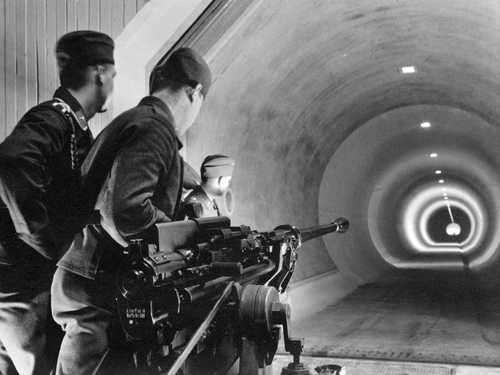
German Forces
Gun test
fbbrummbar
This is a high quality photograph of three Luftwaffe technicians testing a Rheinmetall 37mm Flak 18 (“Flugzeugabwehrkanone”, or aircraft defense cannon) in a 400-meter long underground tunnel built for the Institute of Kinematics at the LFA Aeronautical Research Institute, Völkenrode, Brunswick. -The main scientists in charge were Wilhelm Thomé, Paul Hackemann, Richard Grammel and Theodor Rossmann. The 15,000 m³ tunnel called "höhenkanal" (high altitude firing range) was built to test anti-aircraft and aircraft weapons. The range had cost approximately 4 million marks! -The atmospheric pressure in the firing zone could be reduced to a level corresponding to the pressure at an altitude of 22,000 m. The diameter of the tunnel made of reinforced concrete was 5.4 m at the firing position and 7.6 m at the target position. -Two further shooting tunnels of 100 m and 25 m in length were mainly used for weapons and ammunition research. In order to test weapons under extreme temperatures, the 100 m shooting tunnel had an additional chamber that could be cooled to -60 ° C or heated to + 80 ° C. -The marking “3.7 cm Flak 18 Waffe Nr. 039” is readable. In German ordnance, 0-series serial numbers often denoted prototypes. The original 37 mm gun was developed by Rheinmetall in 1935 as the 3.7 cm Flak 18. The armor penetration was considerable when using dedicated ammunition: At 100 m distance it could penetrate 36 mm of a 60° sloped armor, and at 800 m distance correspondingly 24 mm. Sources: www.dlr.de, Leslie E. Simon, German Research in World War II, 1947, and https://www.geschichtsspuren.de/artikel/luftfahrt-luftwaffe/98-luftfahrtforschungsanstalt-braunschweig.html taken from fb/World Military history
2172 Views
4/9/2020
